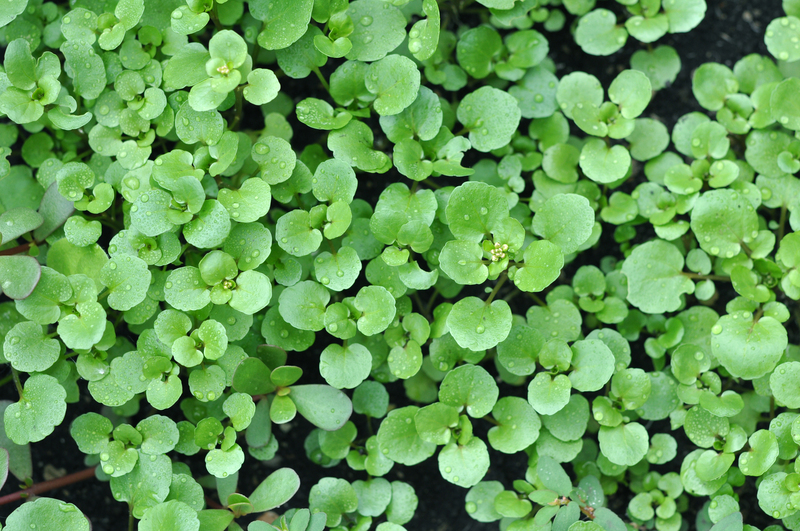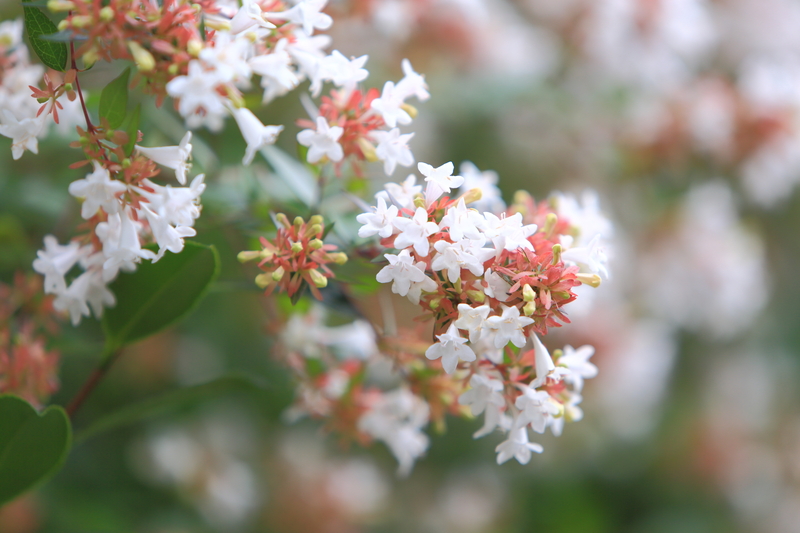How to Grow a Thick, Green Lawn: Expert Tips for Newbies
If you dream of stepping onto lush, emerald-green grass every morning, you are not alone. A thick, vibrant lawn not only beautifies your home but also creates a welcoming outdoor retreat. However, as a beginner, transforming your patchy, uneven yard into a verdant oasis can seem like a daunting challenge. That's why we've compiled this comprehensive, SEO-optimized guide to growing a thick, green lawn, complete with expert tips for newbies.
Understanding Lawn Basics: The Foundation of a Healthy Lawn
Before diving into specific tips, it's crucial to understand that lush lawns don't just happen--they're cultivated. Healthy lawns require attention to soil, grass type, water, sunlight, and maintenance. So, how can you grow a thick green lawn when you're just starting?
- Know your grass type: Not all grass is created equal. Some thrive in sun, others in shade. Choose the best grass seed for your region and lawn environment.
- Soil health: Your lawn's foundation is its soil. Test, amend, and treat your soil for optimal grass growth.
- Regular maintenance: A beautiful, dense lawn is the result of consistent care, from mowing to watering and weed control.

Step 1: Start With the Soil
Test and Amend Your Soil
First and foremost, thick green lawns start with healthy soil. Most homeowners overlook this step and wonder why their grass struggles. Testing your soil allows you to:
- Identify pH (optimum is usually between 6.0 and 7.0 for lawns)
- Determine nutrient deficiencies (like nitrogen, phosphorus, potassium)
How do you test your soil? Pick up an inexpensive soil test kit from a garden center or send a sample to your county extension service. Once you know what your soil lacks, add the recommended amendments--such as lime to raise pH or fertilizer for nutrients.
Improve Soil Structure
If your soil is too compact, it will suffocate grassroots and hinder the quest for a greener, thicker lawn. Loosen the soil with core aeration once a year. Aeration involves removing small plugs of soil, allowing air, nutrients, and water to reach the roots.
Step 2: Choose the Right Grass Seed for a Thick, Green Lawn
Selecting the correct grass variety is essential for a lush, resilient lawn. Consider these factors:
- Climate--Cool-season grasses (like Kentucky bluegrass, fescue) thrive in the north, while warm-season grasses (like Bermuda, zoysia) suit the south.
- Sunlight--Some types handle shade well, others require full sun.
- Maintenance--Some grasses grow fast and need frequent mowing, while others are more slow-growing.
Match your grass seed to your yard's unique sun, shade, and climate conditions for the thickest, greenest lawn possible.
Step 3: Proper Planting Techniques
How to Seed Your Lawn
Follow these steps for optimal results:
- Prepare the soil: Rake out debris, remove rocks, and smooth the surface.
- Spread your seed: Use a broadcast spreader for even coverage.
- Cover lightly: Gently rake the area so seeds are just beneath the soil surface, or lay a thin layer of straw to protect new seed.
- Water regularly: Keep the soil consistently moist but not soggy until seeds germinate (usually 1-3 weeks).
If you're overseeding (adding seed to an existing lawn), mow low and rake away clippings before applying new seed for the best thickness and green-up.
Step 4: Watering for a Thick, Green Lawn
How Much and When to Water
Many new lawn owners make the mistake of over or under-watering. For maximum thickness and greenery:
- Water deeply and less often--Aim for 1 inch of water per week, including rainfall.
- Morning watering is ideal--This reduces evaporation and prevents disease.
- Never water at night--Prolonged wetness encourages fungus.
Pro tip: Place a cup in your lawn to measure sprinkler output and ensure you're applying the right amount!
Step 5: Mow Like a Pro for the Lawn of Your Dreams
Setting the Right Height
Mowing may seem simple, but it's key to growing a dense, green lawn. Set your mower blades high--never cut more than one-third of the grass blade at a time. This builds a deeper root system and shades out weeds.
- Cool-season lawns: 2.5 - 4 inches
- Warm-season lawns: 1.0 - 3 inches
Sharpen mower blades regularly for clean cuts; dull blades tear grass, causing brown tips and stress.
Step 6: Fertilize for Color and Growth
Choosing the Right Fertilizer
Fertilization is another key to a thick green lawn. Lawn fertilizer contains three main nutrients:
- Nitrogen (for foliage and rapid growth)
- Phosphorus (for roots)
- Potassium (for overall vigor)
Follow your soil test results and choose a balanced fertilizer. Many experts recommend slow-release granular fertilizers for even, long-lasting nutrition.
When to Fertilize
Time your feedings:
- Cool-season lawns: Early spring and early fall for best results
- Warm-season lawns: Late spring and mid-summer
Never fertilize during extreme heat or drought--it can damage your grass.
Step 7: Prevent and Control Weeds
Weed Control Strategies
Weeds compete with grass for nutrients and water. A thick, healthy lawn can choke out most weeds, but proactive steps help:
- Apply pre-emergent herbicide in early spring to prevent crabgrass and other grassy weeds.
- Spot-treat visible weeds with selective herbicide or manually pull them.
- Maintain thick turf--Dense grass crowds out weed seeds naturally.
Step 8: Aerate and Dethatch for Lawn Health
Core Aeration
As mentioned earlier, aerate your lawn annually--especially if you see water pooling after rain or notice lots of foot traffic. Fall is ideal for cool-season lawns, and late spring for warm-season varieties.
Dethatching
Thatch is a layer of organic matter that can suffocate your lawn if it exceeds half an inch. Use a dethatching rake or machine to remove excess thatch each season. This empowers grassroots to breathe and thrive, leading to a more lush lawn.
Step 9: Deal with Lawn Pests and Diseases
- Inspect for brown patches, chewed blades, or areas of sudden die-back.
- Diagnose issues early--a local extension service or garden center can help.
- Apply eco-friendly pest controls, like beneficial nematodes or organic fungicides, for minor issues.
Strong, healthy turf naturally resists most pest and disease problems. By following the previous steps, you'll greatly reduce these risks!
Step 10: Maintain Your Lawn All Season Long
Seasonal Lawn Care Checklist
Lawn maintenance isn't a one-time job. For truly thick, green grass, stick to this all-season regimen:
- Spring: Test soil, fertilize, overseed, control weeds, and begin mowing.
- Summer: Water deeply, mow high, and watch for pests/disease.
- Fall: Aerate, dethatch, apply fall fertilizer, and overseed if needed.
- Winter: Rake leaves, avoid heavy traffic on frozen grass, and plan for next year's improvements.
Consistency is key to maintaining a beautiful, resilient lawn for years to come.
Bonus Tips: Secrets to a Lush, Green Lawn
- Mulch your mower clippings--They return valuable nitrogen to the soil.
- Avoid scalping--Cutting grass too short weakens roots and invites weeds.
- Top-dress with compost annually to improve soil and boost microbial life.
- Correct drainage problems--Poor drainage can drown grassroots and breed disease.
- Edge your lawn for a crisp look and to cut off encroaching grass/weeds.

Frequently Asked Questions About Thick, Green Lawns
1. How long does it take to grow a thick, green lawn?
Patience is required. Depending on your starting point, it can take one growing season (spring to fall) to see a dense, green transformation. Some areas may need overseeding for several years for best results.
2. What's the best fertilizer for thickening lawns?
Always follow your soil test, but slow-release, nitrogen-rich products work well for most homeowners seeking a deep green color and thicker turf.
3. Can I grow a thick green lawn in the shade?
It's challenging, but possible. Choose shade-tolerant grasses like fine fescue, mow higher, and minimize foot traffic in shady areas for better results.
4. Why is my new grass turning yellow?
This could be due to overwatering, underwatering, fertilizer burn, or pest issues. Diagnose the exact cause and adjust your watering and care as needed.
Conclusion: Growing a Thick, Green Lawn--You Can Do It!
Creating a lush, thick green lawn is completely attainable, even for lawn care newbies. Start with strong soil, choose the right seed, water and feed carefully, mow with precision, and handle weeds or pests promptly. Like any living thing, your lawn needs ongoing care, but with consistency and these expert strategies, you'll soon enjoy a luxurious, envy-worthy yard.
Remember, the key to a thick green lawn is not perfection, but progress--each season's efforts build on the last. Grab your gloves, follow the steps above, and get growing!
Happy lawn cultivating!